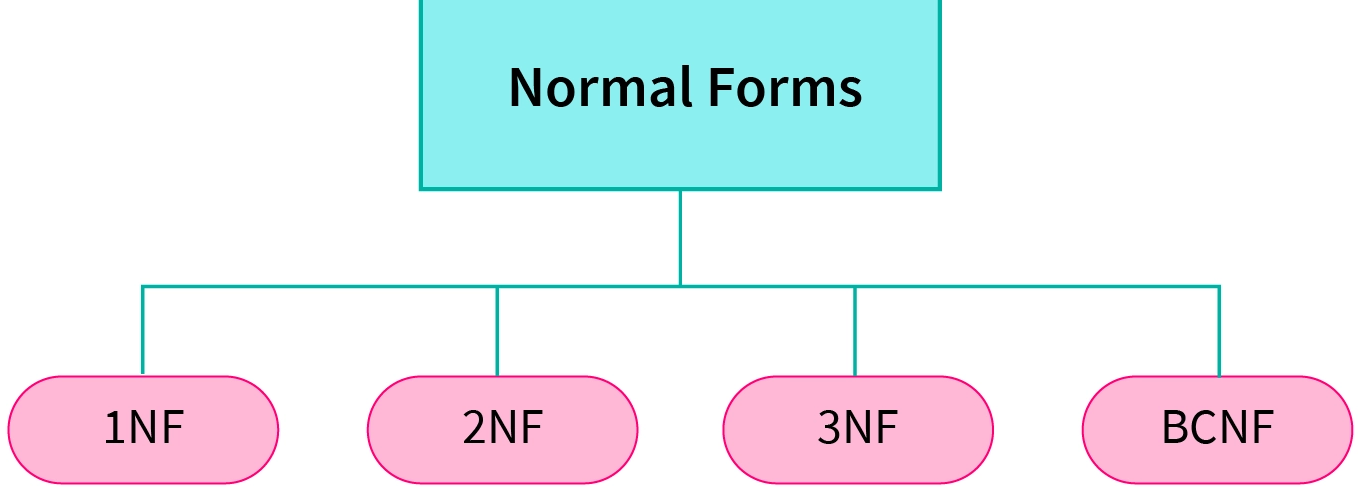Effective management of data is vital in any business. With the growth of businesses and their data requirements, there’s a tendency for databases to become more complicated and chaotic.
In the absence of one such management and organization, this data can result in access to unnecessary data, as well as numerous clashes over infrastructure management and delivery of queries. This is where the need for normalization of the database arises. Normalization in a DBMS is a technique used in the organization of data in order to eliminate anomalies and enhance the integrity of the data. But what is normalization in DBMS? We look at this issue in more detail.
The aim of this blog is to define normalization, explain why it is so important, and list down different forms of normal forms in DBMS that are essential for database designing.
What is Normalization in DBMS?
Normalization in DBMS represents the process of organizing data within a database in such a way that it minimizes redundancy (duplicate data) and ensures that data dependencies are logical and clear. The process involves segmenting a database into two or more tables and highlighting relationships between them to eliminate redundancy and inconsistent data.
A normal form is defined as a property that can be used to streamline the structure of the tables in the design of relational databases. These properties are important as they enable a database designer to make sure that the database is devoid of unwanted qualities like an update, deletion, or insertion anomaly. In other words, normalization guarantees the optimum structures and logical consistency of the database.
Why is Normalization Important?
Normalization in DBMS has various functions but the most significant being the fact that it promotes an efficient design to a database structure, reduces level of redundancy and eases the management of the data. Here are some views why normalization is a significant factor in a DBMS:
Eliminating duplicate data
Minimizing data redundancy is one of the most prominent objectives of Normalisation. Redundant data raises the storage requirements and flaws within the data. For instance, customer details can be recorded in more than one table. If any of the tables are updated, other tables might not get that and they are likely to be outdated.
Improving Data Integrity
Normalization in the system in the case of DBMS allows for one and only one occurrence of a data. As a result, there are reliable means of preventing anomalies such as partial update, in which one or more instances of data is modified but the others remain the same. Once organized within the system, the information is retained in such a way that its integrity and consistency are still maintained.
Simplifying Database Design
A well-normalized database is easier to manage and understand. It simplifies database design by breaking down complex data structures into smaller, manageable parts. This makes queries faster and more efficient, as the system doesn’t have to deal with unnecessary or redundant data.
Types of Normal Forms
To normalize a database, it must comply with a series of normal forms. These normal forms are sets of rules that a database must follow to be considered normalized. Each higher normal form addresses more complex relationships and data anomalies. Below are the common types of normal forms in DBMS.
First Normal Form (1NF)
The first normal form in DBMS requires that all columns in a database table contain atomic (indivisible) values. This means that the data must not contain repeating groups or arrays. In simpler terms, each field must contain only one value, and each record must be unique.
1NF in DBMS Example:
Imagine a table that stores customer orders, with a column for products ordered. If one customer orders multiple products, storing those in a single cell (e.g., “Product A, Product B”) violates 1NF. Instead, we split the products into separate rows or tables.
In 1NF, a table is considered properly organized when:
- All entries in a column are atomic (no lists or arrays).
- Each record is unique.
Second Normal Form (2NF)
The second Normal Form (2NF) builds on 1NF by eliminating partial dependencies. In a table that’s in 2NF, all non-key elements should depend on the entire primary key, not just part of it. This normal form applies primarily to tables where a composite key (a key consisting of multiple fields) is used.
2nd Normal Form Example:
Consider a table where the primary key is a combination of a student ID and course ID, with attributes like student name and course name. If the student name depends only on the student ID and not the combination of both student ID and course ID, the table violates 2NF.
To normalize it to 2NF, we would separate the data into two tables: one for students and another for courses, linked by the student ID and course ID.
Third Normal Form (3NF)
The Third Normal Form (3NF) is when a table is formed that is already in 2NF but additionally has the requirement that all the attributes in it are functionally dependent solely on the Primary key, and nothing else. For every relation in 3NF, there should exist no transitive anomaly which means all non-primary key columns are free from depending on other non-primary key columns.
3rd Normal Form Example:
Let’s say you have a table with employee details where the primary key is the employee ID, and there are fields for employee name, department, and manager name. If the manager’s name depends on the department rather than the employee ID, the table is not in 3NF.
To comply with 3NF, we would remove the dependency by creating a separate table for departments linking it with the employee table via the department ID.
Boyce-Codd Normal Form (BCNF)
The Boyce-Codd Normal Form (BCNF) is a stricter version of 3NF. It addresses specific situations where 3NF does not eliminate certain types of redundancy. A table is in BCNF if, for every functional dependency (A → B), A is a superkey. This means that if any attribute in the table is functionally dependent on another attribute, the latter must be a superkey.
BCNF can be considered an enhanced version of 3NF in DBMS, ensuring a more robust design by eliminating even more subtle redundancy issues.
Fourth Normal Form (4NF)
The Fourth Normal Form (4NF) deals with multivalued dependencies. A table is in 4NF if it is in BCNF and has no multivalued dependencies. Multivalued dependency occurs when one attribute in a table uniquely determines another set of attributes, leading to redundancy.
In 4NF, we ensure that no multivalued dependencies exist by breaking down tables into smaller, more specific ones where each attribute depends only on the primary key.
Fifth Normal Form (5NF)
The Fifth Normal Form (5NF), also known as the Project-Join Normal Form (PJNF), ensures that tables are decomposed into the smallest possible entities without losing any data during joins. It deals with complex join dependencies and ensures that no redundant data arises from these relationships.
Advantages of Database Normalization
Normalization brings several advantages to database management, including:
- Reduced Data Redundancy: By organizing data in separate tables and eliminating repeating groups, normalization minimizes redundancy.
- Improved Data Integrity: With reduced redundancy comes better consistency, as the same data isn’t stored in multiple places.
- Simplified Queries: Since the database design is cleaner, queries are simpler, making the database easier to work with.
- Efficient Updates: Changes need to be made only in one place, reducing the chance of anomalies.
Disadvantages of Database Normalization
However, normalization isn’t without its downsides. Some of the disadvantages include:
- Increased Complexity: Normalized databases are split into multiple related tables, which can make the design complex.
- Performance Overheads: Since data is spread across multiple tables, complex joins are often required to retrieve data, which can lead to slower performance.
- Difficult Learning Curve: For new users or developers, working with a highly normalized database may be challenging due to its complexity.
Conclusion
A normalization of the database is a systematic procedure in DBMS that aims at organizing the data in order to eliminate redundancy, enhance the integrity of the data and structure of the database. Various normal forms in DBMS such as 1NF, 2NF, 3NF, and so on are the tools which database designers, so to speak, have at their disposal to make sure that the databases remain well structured and at the same time scalable.
However, like any other strategy, normalization also has its demerits such as increasing complexity and cost of performance but as said, the importance of having an organized and structured set of data is more critical than the negative attributes.
It is very evident that there is an importance of achieving coherence of data and consequently an understanding of normalization types and their application in practice are two essential aspects that can enhance the management and functioning of any given database management system.






Add comment